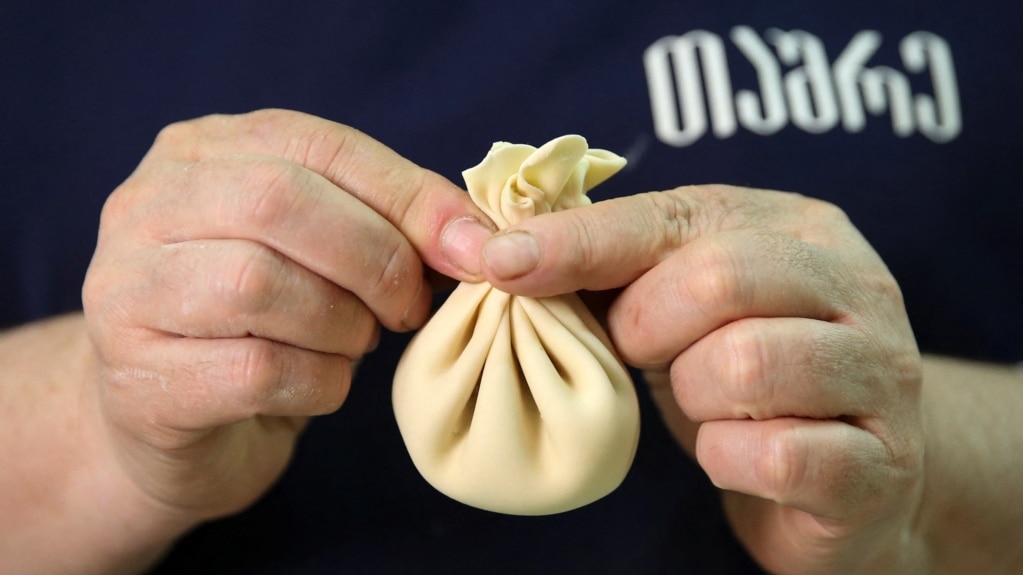In the Caucasus Mountains nation of Georgia, dumpling-eating is a serious activity.
"I'm not Georgian, but the first rule I learnt when I came to Georgia was how to eat khinkali," says Sergei Shirinsky. He says he is now a dumpling expert.
Georgian khinkali is a national symbol and source of pride. It is usually filled with a mix of raw ground beef and pork, as well as herbs and spices. It is then boiled and served hot.
Khinkali is also the reason behind many mealtime debates.
"You should know that it's eaten with hands only. That's the first rule," Shirinsky says.
Usually, eaters hold a single khinkali by its base. Its base is a collection of dough brought together during the folding process to bring the dumpling together. Then, eaters bite into the soft underside, being sure to eat any juices in the process.
The second rule is no condiments –- things added to give food a stronger taste.
"If you add something other than pepper you can go to prison in Georgia," Shirinsky jokes.
The exact beginnings of the dumpling in Georgia are unclear. But khinkali has been prepared in towns and villages across the country for centuries. Different areas of the country still argue over who invented it and who makes it best.
Modern versions include a variety of different stuffing choices like Georgian sulguni cheese, mushrooms and potatoes.
Khinkali-making has also become popular among the millions of tourists that visit the country every year.
In the capital Tbilisi, retired doctor Irina Djandieri offers cooking classes in her living room.
"It's fun, it's fascinating and in the end it is very tasty," she says.
"Every week we have a khinkali day in our family... It's a great excuse to gather with friends and relatives," says Christine Mamasakhlisi. She is a dance teacher from Tbilisi.
"Everything revolves around khinkali here,” she says. “This is not just a dish, it’s an integral part of Georgian culture and identity."
I’m Dan Novak.

